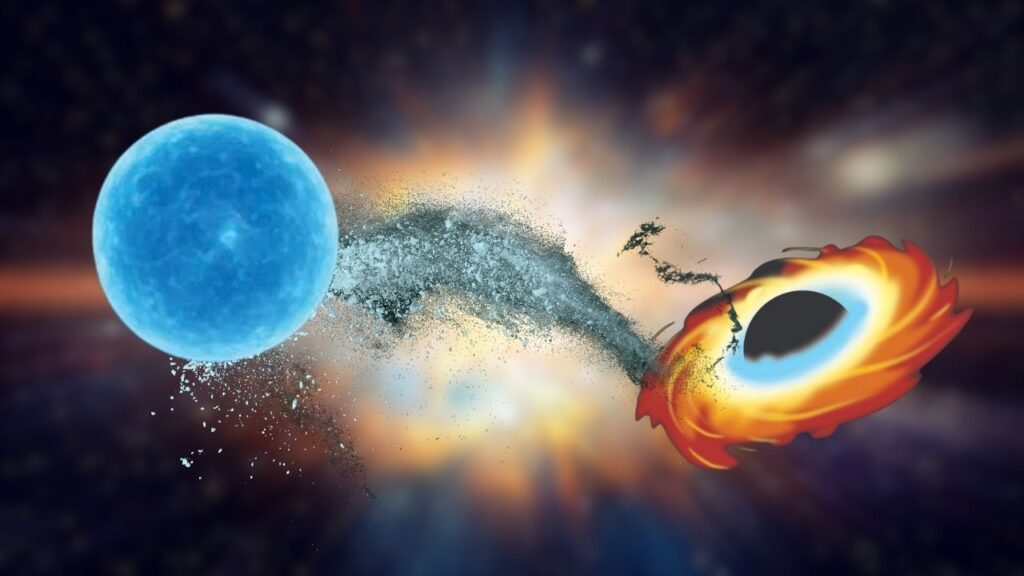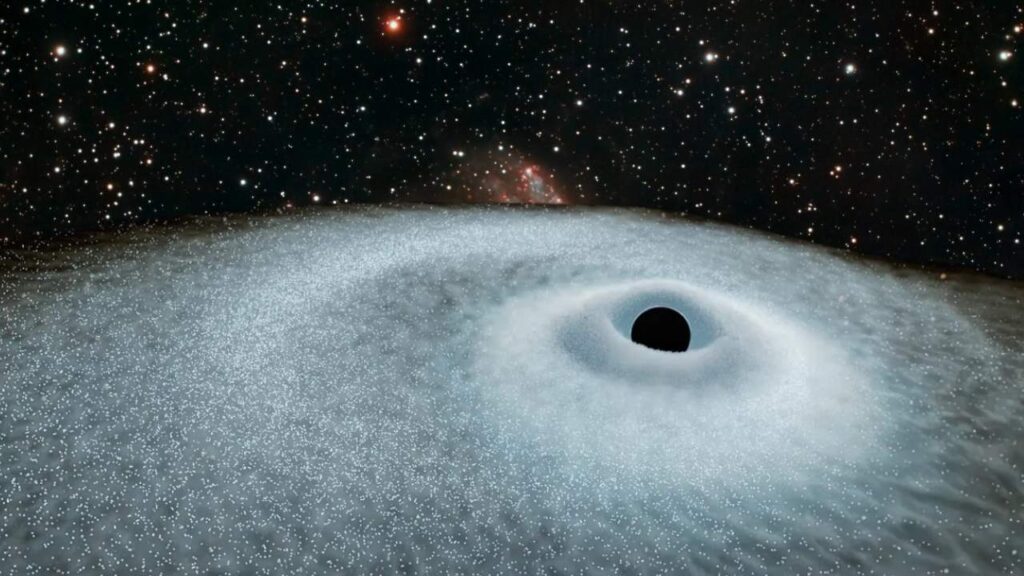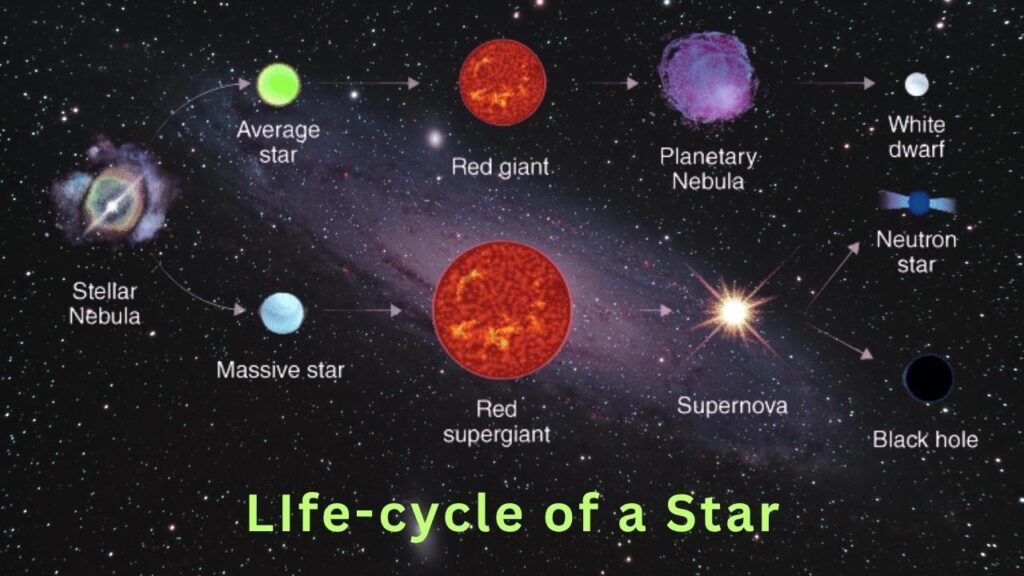New Kind of Cosmic Explosion Far Brighter Than Supernovae: In June 2025, astronomers made a discovery that has left the scientific community—and the world—absolutely awestruck: a new kind of cosmic explosion, so powerful that it outshines even the brightest supernovae ever recorded.

These events, called Extreme Nuclear Transients (ENTs), are rewriting what we know about the universe’s most violent and energetic phenomena.
New Kind of Cosmic Explosion Far Brighter Than Supernovae
| Feature | Details |
|---|---|
| Discovery | Extreme Nuclear Transients (ENTs), the most powerful cosmic explosions since the Big Bang |
| Energy Output | Up to 25 times more than the brightest supernovae; 100 times the Sun’s lifetime energy in a single year |
| Duration | Remain luminous for years, much longer than supernovae (which last weeks) |
| Cause | Massive stars (≥3x Sun’s mass) torn apart by supermassive black holes |
| Rarity | 10 million times rarer than supernovae |
| Significance | Offers new insights into black holes, galaxy evolution, and cosmic history |
| Official Resource | European Space Agency Gaia Mission |
The discovery of Extreme Nuclear Transients is a landmark moment in our understanding of the universe. These cosmic explosions, far brighter and more powerful than any supernova, are helping astronomers unlock the secrets of black holes, the life cycles of stars, and the very fabric of our cosmos. As telescopes and technology improve, we can expect even more astonishing discoveries that will continue to expand our view of the universe.
What Are Extreme Nuclear Transients (ENTs)?

Extreme Nuclear Transients are a newly identified class of cosmic explosions that are, quite literally, the most energetic events ever observed in the universe since the Big Bang. Unlike supernovae, which are already among the most powerful explosions known, ENTs are triggered when a massive star—at least three times the mass of our Sun—wanders too close to a supermassive black hole at the center of a galaxy.
The black hole’s immense gravity rips the star apart in a process called tidal disruption. But ENTs are not just typical tidal disruption events (TDEs). They are much brighter, last much longer, and release orders of magnitude more energy than anything previously seen.
How ENTs Were Discovered
The story of ENTs began when astronomers, led by Jason Hinkle at the University of Hawaii’s Institute for Astronomy (IfA), were analyzing data from the European Space Agency’s Gaia spacecraft. They noticed unusual, long-lasting flares coming from the centers of distant galaxies—flares that didn’t match any known cosmic event.
Two such flares were recorded in 2016 and 2018 by Gaia, and a third similar event was picked up in 2020 by the Zwicky Transient Facility (ZTF). These discoveries, confirmed by follow-up observations from the W. M. Keck Observatory, revealed a new class of cosmic explosions.
How Do ENTs Compare to Supernovae and Other Cosmic Explosions?
To appreciate just how extraordinary ENTs are, let’s compare them to supernovae and other well-known cosmic blasts:
| Feature | Supernovae | Tidal Disruption Events (TDEs) | Extreme Nuclear Transients (ENTs) |
|---|---|---|---|
| Energy Output | 1 Sun’s lifetime in 1 year | Varies, but less than ENTs | 25x brightest supernovae; 100 Suns’ lifetimes per year |
| Duration | Weeks | Months | Years |
| Cause | Star’s core collapse | Star shredded by black hole | Massive star shredded by supermassive black hole |
| Rarity | Common (relatively) | Rare | 10 million times rarer than supernovae |
| Visibility | Nearby galaxies | Some distant galaxies | Extremely distant galaxies |
Example:
A typical supernova releases as much energy in a year as our Sun will emit over its entire 10-billion-year lifetime. An ENT, however, can release 100 times more energy than that in a single year!
Why Are ENTs So Important?

Extreme Nuclear Transients are not just a new curiosity; they are a major breakthrough for astronomy and astrophysics. Here’s why:
- Unlocking Black Hole Mysteries: ENTs give us a unique way to study supermassive black holes, which are otherwise invisible unless they’re actively consuming matter.
- Cosmic Beacons: Because ENTs are so bright and last so long, they can be seen across vast cosmic distances, helping astronomers map the universe’s distant past.
- Understanding Stellar Death: ENTs provide clues about how massive stars die and how their remnants contribute to the evolution of galaxies.
- Testing Physics: The extreme conditions during these explosions allow scientists to test theories about gravity, matter, and energy in ways that aren’t possible on Earth.
How Can You Spot an ENT? (For Amateur Astronomers)
While ENTs are so rare that most will never be seen by the naked eye, large telescopes and space observatories are constantly scanning the skies for these events. If you’re interested in following discoveries:
- Check updates from major observatories like the European Space Agency’s Gaia mission.
- Follow astronomy news from reliable sources.
- Join local astronomy clubs to learn about the latest discoveries and participate in citizen science projects.
The Science Behind ENTs: Step-by-Step Guide
Step 1: A Massive Star Wanders Too Close
A star with at least three times the mass of our Sun drifts near the center of its galaxy, where a supermassive black hole lurks.
Step 2: Tidal Disruption Begins
The black hole’s gravity pulls harder on one side of the star than the other, stretching and eventually tearing the star apart—a process called tidal disruption.
Step 3: The Explosion
As the star’s material spirals into the black hole, it heats up to millions of degrees, releasing a burst of energy that’s visible as a bright flare across the universe.
Step 4: The Afterglow
Unlike a supernova, which fades in weeks, an ENT remains bright for years, allowing astronomers to study its evolution in detail.
Practical Advice: How This Discovery Impacts You
For Students and Educators:
ENTs are a perfect example of how science is always evolving. Use them as a case study for the scientific method, the importance of observation, and the excitement of discovery.
For Professional Astronomers:
ENTs open new avenues for research in black hole physics, galaxy evolution, and high-energy astrophysics. They may also help refine models of stellar death and accretion physics.
For Science Enthusiasts:
Stay curious! The universe is full of surprises, and discoveries like ENTs remind us that there’s always more to learn.
Scientists Detect Mysterious Radio Pulses Coming From Deep Beneath Antarctic Ice Sheet
Optimized Solvents Significantly Improve Carrier Mobility in Metal-Organic Frameworks (MOFs)
New Smart Material Brings Electronic Skin Closer to Reality for Robots and Human Prosthetics
FAQs About New Kind of Cosmic Explosion Far Brighter Than Supernovae
Q: What is an Extreme Nuclear Transient (ENT)?
A: An ENT is a newly discovered type of cosmic explosion, caused when a massive star is torn apart by a supermassive black hole, releasing energy far greater than any known supernova.
Q: How rare are ENTs?
A: ENTs are about 10 million times rarer than supernovae, making them some of the rarest cosmic events ever observed.
Q: How long do ENTs last?
A: Unlike supernovae, which fade in weeks, ENTs remain luminous for years.
Q: Why are ENTs important for science?
A: They provide new ways to study black holes, galaxy evolution, and the physics of extreme environments.
Q: Can ENTs be seen from Earth?
A: They are visible with powerful telescopes and space observatories, but not to the naked eye due to their distance and rarity.






